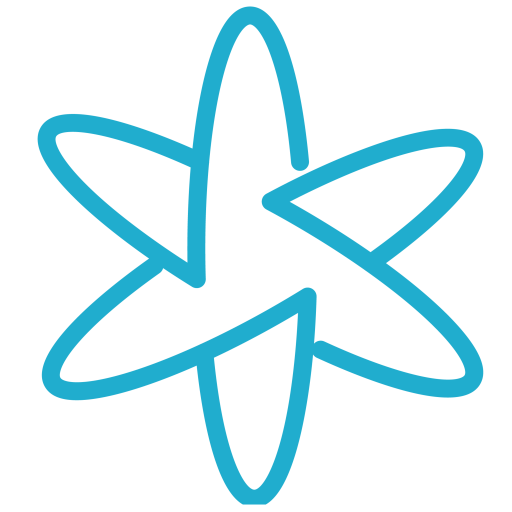Quantum computing is transforming machine translation, achieving unmatched accuracy and efficiency. It leverages quantum algorithms to redefine language technology. This innovation is unlocking new avenues for smooth global communication and information sharing.
Quantum computing’s application in machine translation is set to elevate translation quality. It enables a deeper understanding and creation of human language. As quantum algorithms evolve, they will overcome the intricate challenges of natural language processing. This marks the beginning of a new era in precise machine translation.
This advancement has significant implications across various sectors. It impacts international business, diplomacy, scientific collaboration, and cultural exchange. Quantum-powered machine translation is poised to bridge linguistic gaps with unmatched precision. It will revolutionize global communication and connection.
The Potential of Quantum Computing in Natural Language Processing
Quantum computing applications are poised to transform natural language processing (NLP) by providing unmatched computational power and efficiency. Quantum computers, leveraging quantum mechanics, can tackle complex calculations and process vast data sets. This quantum advantage promises to enhance computational linguistics and language models significantly.

Quantum computing’s impact is most evident in handling large-scale linguistic data. NLP tasks, such as analyzing web pages and social media, require processing enormous text volumes. Quantum algorithms efficiently process this data, revealing patterns and insights. This enables the development of more accurate language models, better grasping human language’s nuances.
Quantum computing also excels in solving complex NLP tasks that demand significant computational resources. For instance, sentiment analysis benefits from quantum computers’ parallel processing. Similarly, named entity recognition, which identifies entities in text, is enhanced by quantum algorithms. These advancements have broad applications, from enhancing customer sentiment analysis to improving research and intelligence gathering.
In machine translation, quantum computing’s role is equally significant. Translating text across languages is a complex task that requires deep understanding of both languages’ semantics and syntax. Quantum algorithms can optimize translation by efficiently exploring and selecting the most accurate translation. This leads to more accurate and natural-sounding translations, breaking down language barriers and facilitating global communication.
As quantum computing technology evolves, it will undoubtedly drive further innovations in NLP. Researchers are actively exploring new quantum algorithms to tackle NLP challenges like question answering and dialogue systems. The synergy between quantum computing and NLP holds the potential to unlock new insights and enable more intelligent language-based applications, pushing the boundaries of computational linguistics.
How Quantum Algorithms Enhance Machine Translation
Quantum algorithms are set to transform machine translation, leveraging quantum computing’s unique properties. They use quantum mechanics, like superposition and entanglement, for parallel computations. This quantum speedup boosts efficiency and accuracy in translation systems.
Quantum algorithms excel in managing language’s complexities. Traditional computing faces challenges with language ambiguity, affecting translation quality. Quantum algorithms, however, can explore multiple interpretations at once. They choose the best translation based on context.

Quantum neural networks are showing great promise in understanding word and phrase relationships. They process large linguistic datasets in parallel, thanks to quantum speedup. This parallel processing enhances their ability to translate languages accurately and fluently.
Quantum annealing is another algorithm gaining attention for machine translation. It excels in solving optimization problems, like finding the best translation among many options. Quantum annealing’s efficiency leads to faster and better translations.
Researchers are also exploring quantum algorithms for language ambiguity resolution. They represent ambiguous sentences as quantum states. This allows them to consider multiple interpretations and choose the most likely meaning based on context. This approach could greatly improve machine translation accuracy, especially with idioms and figurative language.
The field of quantum-enhanced machine translation is still evolving. Yet, the potential benefits are vast. As quantum computing advances, we’ll see more advanced algorithms in natural language processing. The integration of quantum algorithms with machine translation promises more accurate and contextually rich translations.
Real-World Applications of Quantum-Boosted Machine Translation
The emergence of quantum-boosted machine translation has ushered in a new era for cross-language communication. It promises to enhance translation accuracy and efficiency, transforming how businesses, organizations, and individuals interact globally. This technology is set to revolutionize cross-language interactions.
In the realm of global business, quantum-boosted machine translation is a game-changer. As companies expand their reach, accurate translation is essential for effective communication. This technology enables seamless interactions, supporting international collaboration and building robust business relationships.
Quantum-boosted machine translation also has a significant impact on multilingual content creation and dissemination. It allows for rapid and precise translation of large texts, making it easier to engage with diverse audiences. This expansion opens new avenues for businesses to grow and connect with customers worldwide.
The healthcare sector stands to gain greatly from quantum-boosted machine translation. Medical professionals often face language barriers when communicating with patients and colleagues. Accurate translation is vital for proper care and diagnosis. This technology bridges language gaps, ensuring critical medical information is shared effectively.
In scientific research, quantum-boosted machine translation facilitates global collaboration and knowledge sharing. It enables researchers from different linguistic backgrounds to access and understand each other’s work more easily. This leads to accelerated scientific progress and innovation. Moreover, it ensures that important scientific findings are disseminated globally.
As quantum computing evolves, so will the applications of quantum-boosted machine translation. It will likely expand into areas like e-commerce, customer support, education, and cultural exchange. The potential for breaking down language barriers and enhancing global understanding is vast. With quantum algorithms, we are on the cusp of a future where cross-language communication is seamless, unlocking new opportunities for collaboration and growth worldwide.
Future Directions and Research Opportunities
Quantum computing’s advancement opens up many exciting avenues in machine translation. Improvements in quantum hardware, like higher qubit counts and lower error rates, will allow for more complex algorithms. This could significantly enhance translation accuracy and handle more intricate linguistic structures and contexts.
Software advancements will also be crucial. Linguists and machine learning experts must work with quantum computing researchers to develop quantum algorithms for natural language processing. Adapting techniques like word embeddings and sequence-to-sequence models to quantum systems could lead to groundbreaking machine translation methods. The success of these efforts will depend heavily on interdisciplinary collaboration.
The field of quantum natural language processing also shows great promise. It aims to represent word meanings and relationships in a quantum state. This could enable machines to understand text semantically, leading to applications in intelligent dialogue systems and knowledge graph construction. As research in this area advances, we can expect significant innovations in language technologies and quantum systems, transforming human-computer interaction.
